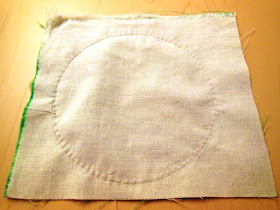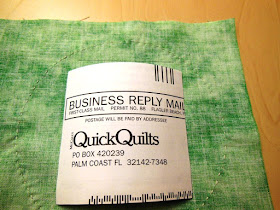Blogging Tip #1
I'm relatively new to blogging and am learning something new every time I visit my blog or someone else's blog. Well, here's something I learned about setting up Pages and how to link them to relevant topics.
Initially, I would just add more information to the top of my page. But I found that unless I set up a list and pointed it to the appropriate spot on that page, it was too tedious to scroll down the page to find what I was interested in. Then I found that I could post a blog on my Home page about the topic related to a Page and set up a list item to point to that blog post. Much more efficient.
To do this, set up a list at the top of your Page, highlight an item, click Link on the toolbar, and enter the link in the blank space next to Web Address. To enter the URL address, first locate the blog post on your Home page, click on the title of the post and copy and past the URL that is displayed up top. I did this on my Quilts Page. Item #1 Cats Wallhanging points to a header imbedded in the same page. Item #26 Star Windows Rug Mug links to a blog post.
So this worked for me for a while, until I discovered that links can also point to other blogs out there, so that's what I did for my Recipes Page. Open this blog in a new window and click on the Recipes tab. Readers who click on this tab are redirected to My Favorite Recipes blog. I did this by
I'm relatively new to blogging and am learning something new every time I visit my blog or someone else's blog. Well, here's something I learned about setting up Pages and how to link them to relevant topics.
Initially, I would just add more information to the top of my page. But I found that unless I set up a list and pointed it to the appropriate spot on that page, it was too tedious to scroll down the page to find what I was interested in. Then I found that I could post a blog on my Home page about the topic related to a Page and set up a list item to point to that blog post. Much more efficient.
To do this, set up a list at the top of your Page, highlight an item, click Link on the toolbar, and enter the link in the blank space next to Web Address. To enter the URL address, first locate the blog post on your Home page, click on the title of the post and copy and past the URL that is displayed up top. I did this on my Quilts Page. Item #1 Cats Wallhanging points to a header imbedded in the same page. Item #26 Star Windows Rug Mug links to a blog post.
So this worked for me for a while, until I discovered that links can also point to other blogs out there, so that's what I did for my Recipes Page. Open this blog in a new window and click on the Recipes tab. Readers who click on this tab are redirected to My Favorite Recipes blog. I did this by
- entering My Favorite Recipes blog
- highlighting and copying the URL from the top of the page
- selecting Pages from the Design Menu
- expanding the drop-down box for New Page
- clicking on Web Address
- entering a Page Title and URL of My Favorite Recipes blog address
- clicking Save
Recently, I started including Labels in each of my blog posts. I like sharing any and all techniques related to my quilt projects, as an example. So I make sure that I include a Label of Tutorial on such a blog post. I also set up Labels to be displayed along the right side of my blog. Imagine my excitement when I found out that a Page can also redirect readers to a given Label! Take a look at my Tutorials Page in a new window. I set this up to point to the Tutorial Label by
- selecting Tutorial from the list of Labels on the right side of my blog page
- highlighting and copying the URL from the top of the page
- selecting Pages from the Design menu
- expanding the drop-down box for New Page
- clicking on Web Address
- entering a Page Title and the URL that I copied previously
- clicking Save
Similarly, I could include a label of Gardening on a blog post and redirect readers of my Gardening page to that label. Neat, eh?
Here you have several different ways of setting up Pages. I hope you will try some of these techniques and have fun doing so.
Cheers!











































